Astronomy’s Most Perfect Ring Galaxy, Hoag’s Object, Is Still A Mystery After 70 Years

We still don’t know how it came to be this way.
Every once in a while, we find an object in the Universe that completely mystifies us. For generations, astronomers have been observing distant galaxies present all throughout the Universe, cataloguing them and noting their various characteristics. Overwhelmingly, galaxies fell into three different categories:
- spiral galaxies, where stars are concentrated in vast, sweeping arms,
- elliptical galaxies, where stars swarm around a central region,
- and irregular galaxies, which are neither spiral nor elliptical, and which often correspond to two or more galaxies in the process of interacting.
Spirals and ellipticals are ubiquitous, with spirals more common among isolated or sparsely populated regions of space, while ellipticals often dominate the centers of large galaxy clusters. But in 1950, astronomer Arther Hoag discovered a galaxy unlike any other: Hoag’s object, dominated by a vast, ring-like halo. 70 years later, we’re still struggling to piece together this galactic mystery.
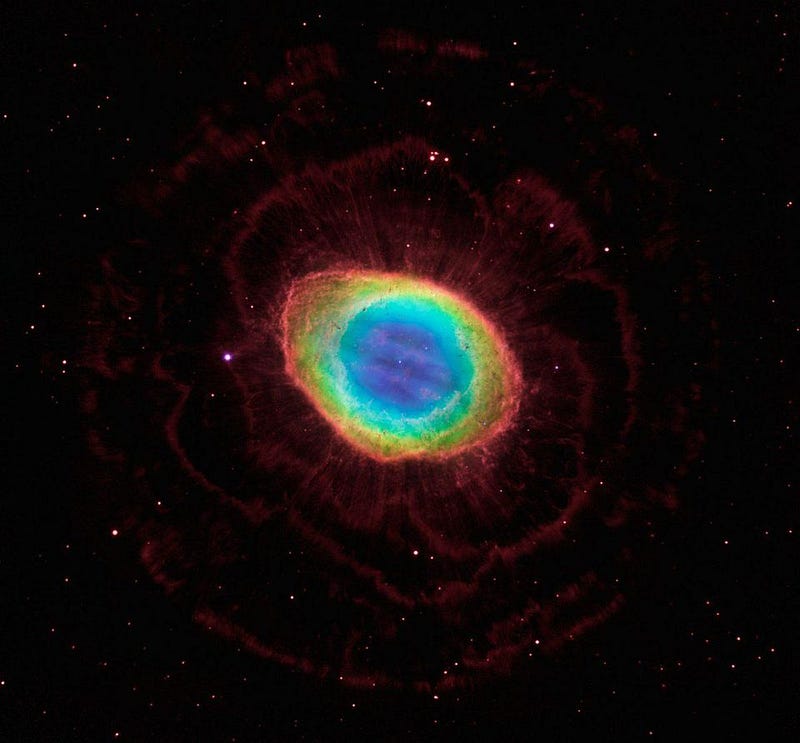
When it was first discovered, astronomers only knew of a few ways to make a ring-like object in space, where a central, bright core appears surrounded by a luminous halo. Yet, none of them quite fit the bill when it came to Hoag’s object. Planetary nebulae, like the Ring Nebula or the Helix Nebula, have either dying stars or stellar remnants at their cores with a bright halo surrounding them, but the central nucleus of Hoag’s object is all wrong for that.
The halo, rather than showing strong emission lines, instead indicates a population of young, blue stars: it’s definitely galactic in nature. Hoag even suggested that it could be a gravitational lens, as those systems can produce a ring in the case of perfect alignments, but both the center and the halo display identical redshifts; they’re part of the same system, not caused by gravitational lensing.
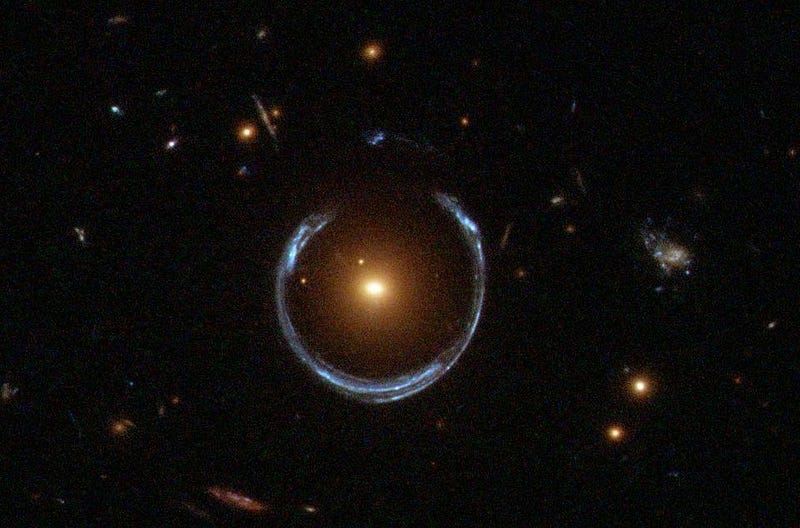
Hoag ended his brief, initial publication with the following ominous quote, “Since the object is unique, I suggest that a proper identification would be a worthwhile short-term project.” In the 70 years that have passed since Hoag’s initial discovery, we’ve discovered a large number of objects with similar features — including an entire sub-category of irregular galaxies with ring-like features — but it still defies categorization.
For the other ring galaxies we find, they involve a small galaxy colliding with a larger galaxy at relatively high speeds. The collision produces a density wave in the larger galaxy, causing matter to be pushed outward, which can trigger star formation in the outskirts. Images of these interacting galaxies are some of the most beautiful, natural sights that the Universe has to offer.

The Cartwheel galaxy, shown above, is perhaps the most famous example of a ring galaxy produced by a collision. When a small galaxy collides with a larger one at high speeds, a shock wave propagates outwards from the center, causing gas to compress and triggering the formation of new stars at specific radii from the center. In short order, this leads to the formation of a luminous ring of new stars, surrounded by ionized hydrogen gas in large regions.
This density wave has to move quickly: on the order of 100 kilometers-per-second or more, in order to explain what we observe. In addition, that ionized hydrogen needs to stick around for a while, reverting to neutral hydrogen as the years go by millions at a time. That’s how you create a typical, classic ring galaxy.
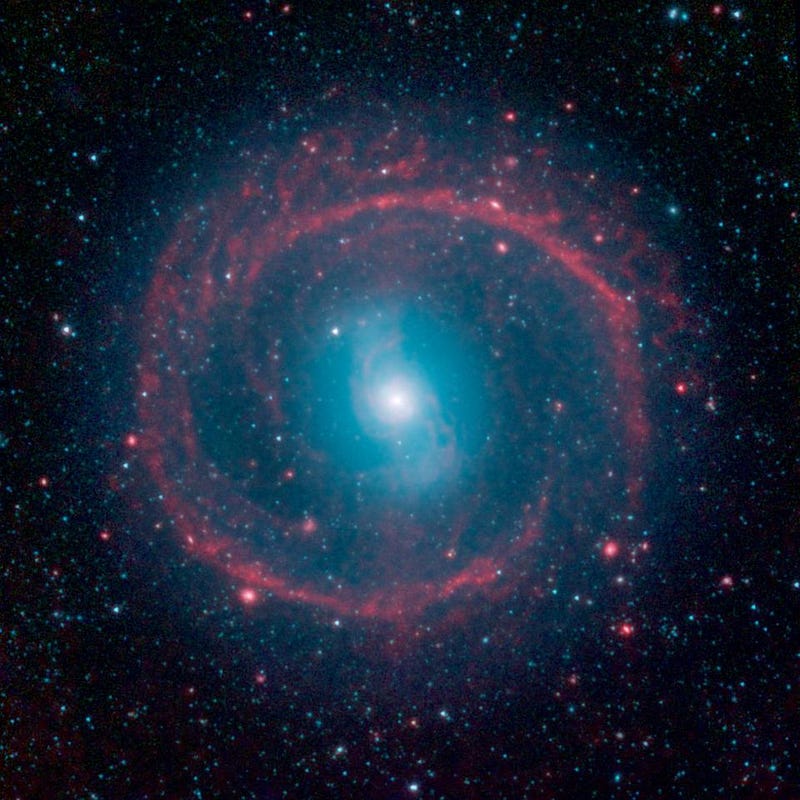
But in all of these cases, where the result is a classic ring galaxy, there are certain features that we can find that are conspicuously absent from Hoag’s object. These include:
- the identification of a second galaxy with a distinct population of stars from the main galaxy,
- the presence of faint fragments of a collision that should persist for billions of years,
- and a high relative velocity between multiple components of the system.
Rather, when we look at Hoag’s object in detail, we find that the (older) core of the central region has a very small relative velocity to the ring, suggesting that they formed from a very quiet process. We find no trace of a second galaxy or of galaxy fragments, all of which disfavor the traditional, classic scenario for forming ring galaxies. And pushing a collision scenario further into the past, to hide this evidence, runs into the problem of the ages of stars: the outer ring of stars is quite blue in color, suggesting a younger age than an older collision admits.
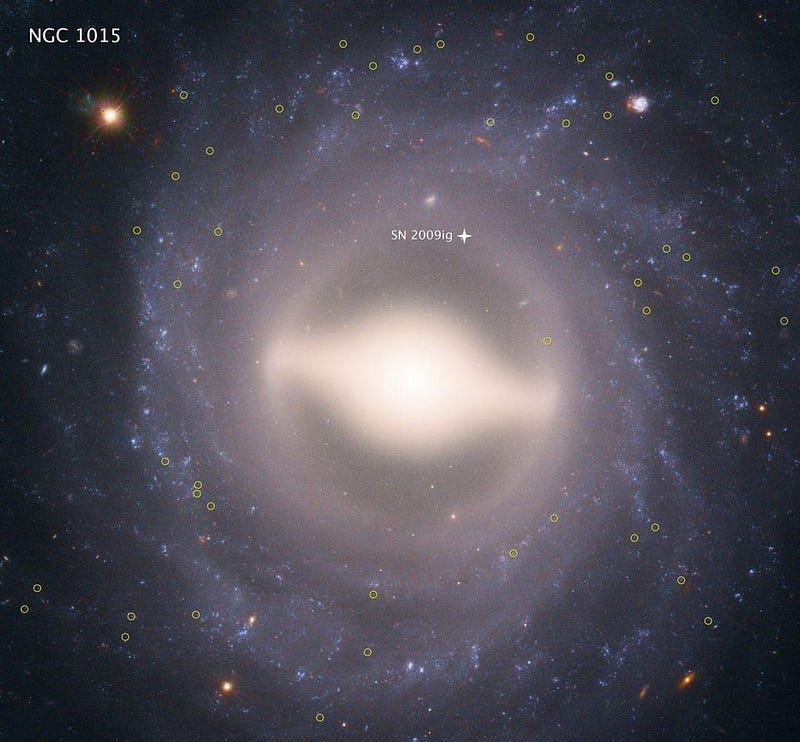
Some have suggested that Hoag’s object might be related to traditional spiral galaxies, albeit with instabilities that lead to “gaps” between the inner and outer portions. However, the nucleus of Hoag’s object isn’t disk-like, which is a feature of spiral galaxies, but rather has a spheroidal shape.
There are galaxies that have a central, spheroidal bulge as well as extended spiral arms that persist well into their outskirts, and so you might think that it’s possible to make a galaxy that looks like Hoag’s object from that. Those galaxies, unfortunately, lack the very feature that’s required to create a separated, distended ring around a galactic core: a large, central bar. Bar instabilities are real, but spiral galaxies with central bars do not have large, spheroidal bulges at their cores. Again, the puzzle pieces for this attempted solution fail to come together.

Fortunately, even exceedingly rare objects — unless they’re truly one-offs — will start to appear in large numbers if you survey enough of the Universe. In 2017, citizen scientists working through the Galaxy Zoo 2 project, involving data from the Sloan Digital Sky Survey, identified and classified a total of 3962 Ringed Galaxies.
When these individual galaxies were further analyzed in-depth, it was found that most of them were spiral galaxies with either inner or outer rings surrounding them, consistent with a recent, past history of interactions or mergers. In almost all cases, there is new star formation occurring in both the inner regions and the outer regions equally. Most of them have central bars. While, on the other hand, fewer than 40 of the nearly 4,000 galaxies in the sample displayed classic ring or polar ring galaxy features: less than 1% of even this highly selective sample.
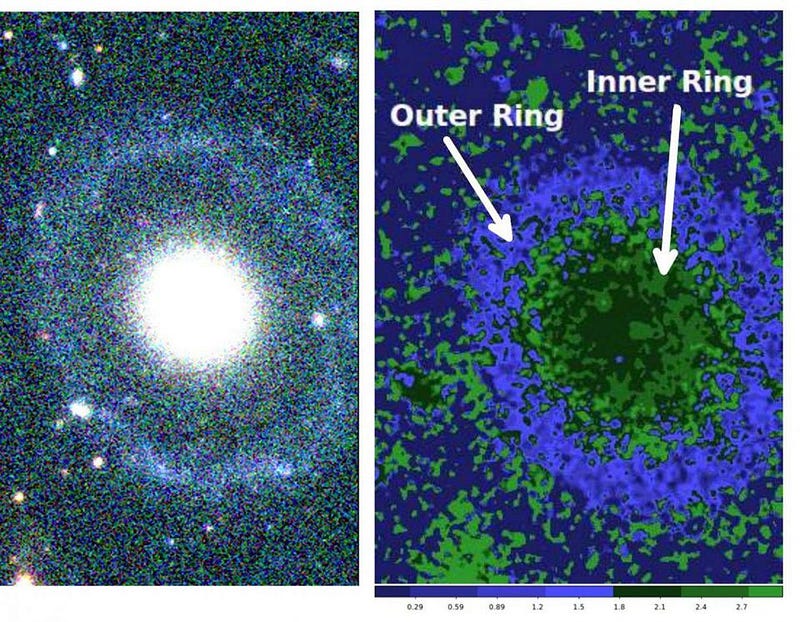
Still, there are a small number of galaxies out there that seem to bear striking similarities to Hoag’s object. Perhaps the closest relative is PGC 1000714, which was studied professionally in 2016. This galaxy, like Hoag’s object, has an elliptical-like core with a nearly perfect outer ring, where the outer ring has a population of younger, bluer stars than the inner core.
There’s also a notable gap, free of both stars and gas, between the spheroidal core and the outer ring. In addition, there is no evidence of a barred feature in the inner region, arguably making this the most Hoag-like galaxy ever discovered. What the authors found, quite compellingly, is that the core itself appears to be about 5.5 billion years old, while the outer ring, based on colors and ages of stars, is only 130 million years old. Somehow, despite not having an identified companion, this outer ring of stars was formed very recently.
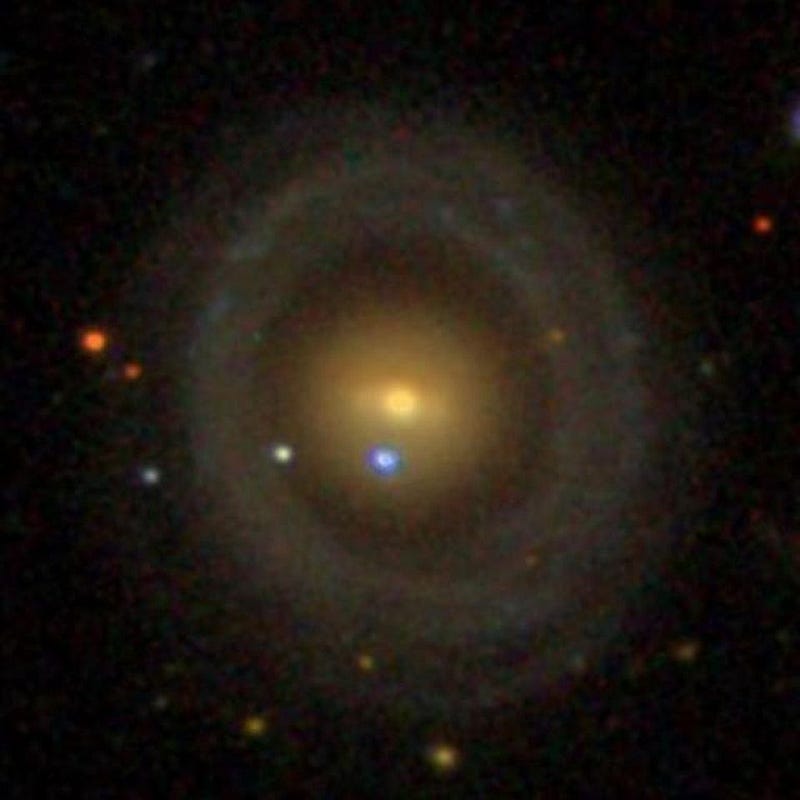
Other galaxies that appear similar to Hoag’s object include NGC 6028, above, and UGC 4599, although both are quite possibly unrelated. The former does have a luminous, spheroidal core surrounded by a faint outer ring, but the core itself is elongated, suggesting that it may have a bar-like feature embedded in a larger structure. Additionally, the asymmetry of the outer ring indicates that it could be a result of very tightly wound spiral arms, a feature that’s interesting on its own but not obviously analogous to Hoag’s object.
The latter galaxy does have an elliptical-like core surrounded by a ring rife with active star-formation, but it is very faint and the outer ring only has a low density of star-forming gas. There are still many unexplained features at play in these and other analogue systems, and it is highly uncertain exactly what mechanisms are responsible for creating these structures. But it’s very clear that the velocities, the gas, the shapes of the galaxies, and the stars found within them are all painting a very confusing, difficult-to-explain picture.
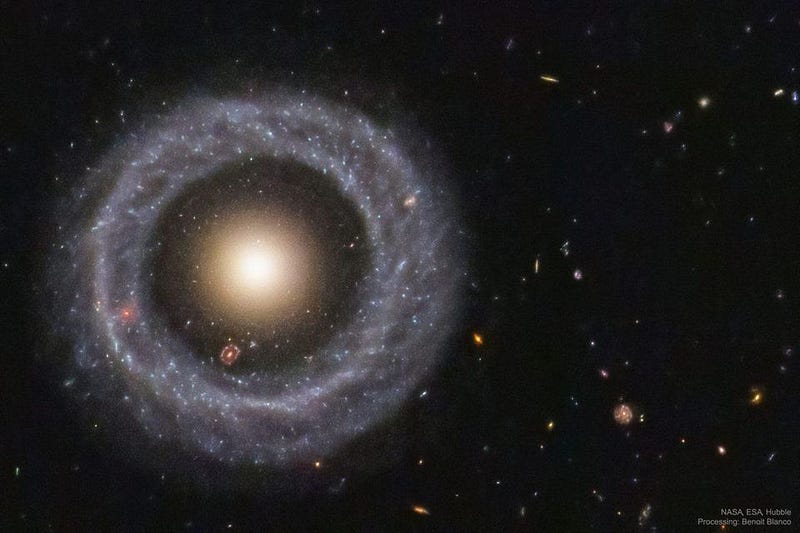
In a way, the mystery of Hoag’s object only adds to its beauty. When we look at it in detail, we find that there’s an older population of stars in the center, corresponding to an elliptical-like core that appears to have very little gas and no evidence of a central bar feature. Beyond that, there’s a gap, with imperceptibly small amounts of gas and stars, lasting tens of thousands of light-years. And in the outskirts, a large halo of young stars persists, created by a mechanism that is not yet decided.
Perhaps there was a very low-speed collision that happened many billions of years ago, and this bizarre configuration is the only remaining clue. Perhaps there was gas or a series of small galaxies that got consumed by the larger elliptical galaxy, creating this outer ring. Or, perhaps, it’s something else entirely, that will require more data and additional objects to fill in these gaps. Whatever the case, 70 years after its discovery, Hoag’s object continues to mystify and astonish all those who investigate it.
Ethan Siegel is the author of Beyond the Galaxy and Treknology. You can pre-order his third book, currently in development: the Encyclopaedia Cosmologica.





